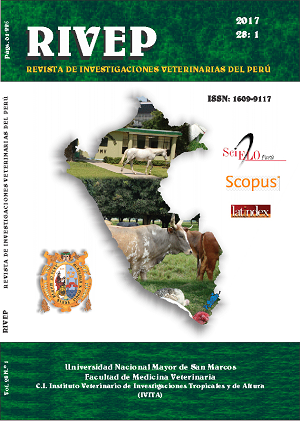Comparison of two models of artificial insemination pipettes in the catheterization of the cervical canal in sheep
DOI:
https://doi.org/10.15381/rivep.v28i1.12939Keywords:
catheterization, cervix, sheep, insemination pipetteAbstract
The aim of this study was to compare the depth of penetration of a dye into the cervical canal in sheep, simulating an insemination by using a traditional artificial insemination (AI) gun and one with a special design that has at the end an inflatable balloon that prevents reflux of dye. Eighty reproductive tracts of non-pregnant ewes were collected from the local slaughterhouse in Lima, Peru and randomly distributed for catheterization with one of the two AI guns, depositing 0.5 ml of methylene blue. The balloon of the second AI gun was inflated before depositing the die. Subsequently, the cervical canal was exposed and the depth of entry of the AI guns and the dye were measured considering the edge of the first cervical ring as zero (0). Both AI guns penetrated 19.9 ± 9.6. The die reached the same depth with the traditional gun and 60.0 ± 9.7 mm with the modified pipette (p<0.05). It is concluded that by using the modified pipette is possible to deposit a fluid more closely to the uterus.
Downloads
Downloads
Published
Issue
Section
License
Copyright (c) 2017 Francisco Rodríguez Gavancho, Juan Muscari Greco, Cesar Condori Chipana

This work is licensed under a Creative Commons Attribution-NonCommercial-ShareAlike 4.0 International License.
AUTHORS RETAIN THEIR RIGHTS:
a. Authors retain their trade mark rights and patent, and also on any process or procedure described in the article.
b. Authors retain their right to share, copy, distribute, perform and publicly communicate their article (eg, to place their article in an institutional repository or publish it in a book), with an acknowledgment of its initial publication in the Revista de Investigaciones Veterinarias del Perú (RIVEP).
c. Authors retain theirs right to make a subsequent publication of their work, to use the article or any part thereof (eg a compilation of his papers, lecture notes, thesis, or a book), always indicating the source of publication (the originator of the work, journal, volume, number and date).










